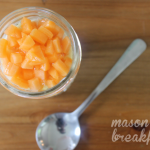Mead and honey wine are gradually coming back. These drinks from the distant past have stayed relevant to the modern-day palate, which allows us to revisit some of their old flavors and educate people about their history. The interest in traditional and artisanal products is behind this revival. But what is causing this resurgence?
The Allure of Tradition
Mead, also known as honey wine, has an ancient pedigree. It has thousands of years of history and traces back to many cultures. This ancient drink has been drunk by Vikings, Greeks, and Celts. The charm of this beverage is its simplicity; you only need to use honey, water, and yeast. It’s a creative process; you often add fruits and spices to add a dash of flavor. Modern consumers respond to the authenticity of mead. At a time when most artificial flavors have become the norm, this natural product is a welcome respite. Mead, it seems, is what people are after; they want an association with the past.
The Craft Beverage Movement
The growth of craft beverages has helped push mead back into the spotlight. Some local craft breweries and wineries are now undertaking mead and honey wine in Montana. It celebrates artisanship, small batch productions, and acquired tastes. And this trend is even more prominent, as mead occupies this ideal space: different types, styles, and flavors. Mead makers are meeting the demand for unique experiences that consumers crave. Their ranges include sweet to dry, sparkling to still. That diversity appeals to people interested in something more than a traditional wine and beer.
Health and Sustainability
Having been inspired by the contemporary health and sustainable environment trend, people have also helped resurrect mead. Honey is a natural substance that is both nourishing and beneficial. More people consider mead a more nutritious beverage than most alcoholic products. As a result, it needs fewer additives, and you can keep sulfites at a low level due to its natural sweetness. Another reason for the increasing popularity of mead is sustainability. The environment benefits from biodiversity, and beekeeping promotes this. When consumers select mead, they are opting for environmentally sustainable choices. It relates to the beliefs of the ecologically conscious.
Cultural Influence And Contemporary Palates
The revival of mead is a symptom of cultural changes. Like international cooking, which is readily available now, no matter which part of the world you live in, the same applies to beverages! Mead is a flavor that pairs well with various dining experiences. It goes nicely with both spicy and heavier fare and desserts. The range includes classic flavor combinations, exotic spices, mild sauces, and everything in between; the modern-day palette is willing to be daring in trying something unfamiliar, which is where Mead comes in, and it satisfies this curiosity with its complex profiles. Its flexibility lends to multiple palettes, and it draws a large crowd.
What are the Festivals and Events for the Role?
The promotion of mead has benefited a lot from festivals and events. Celebrating the beverage, these events consist of tastings and education. They are a place for mead makers to display their creations. Visitors can gain insights into how people brewed this ancient drink. Events like that create a community of enthusiasts. They make room for folks to express gratitude and find new favorites. This communal feeling is part of why mead has been attracting more attention.
The Good, the Bad, and the Ugly
Mead still has some uphill slopes before its upward trend can continue. Relative to other spirits, public awareness continues to be minimal. Other consumers do not know what it tastes like or how to enjoy it. Education and marketing can help overcome these challenges. But these hardships also create opportunities. Interest grows with ever-increasing awareness of mead. It provides a space for producers to innovate by crafting flavors that resonate with modern palates. Chefs and food pairings can also help boost mead sales.
Conclusion
The return of mead and honey wine indicates shifting consumer tastes. Authenticity matters for people, too; they found the handmade artisanal product that offers consumers something traditional. Its adaptability and tie to sustainability appeal to 21st-century ideals. With the meteoric rise of mead, this drink brings an interesting variety of tastes to the beverage world. The success of its revival did not simply connect with the craze; it provided a permanent custom and innovation. Mead welcomes all to experience an elixir for the palate & core that connects mindfully ancient and pleasurably modern.






Leave a Reply